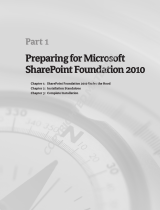
Symantec Corporation World Headquarters
20330 Stevens Creek Blvd., Cupertino, CA 95014 USA
+1 (408) 517 8000 / +1 (800) 721 3934
© 2008 Symantec Corporation. All rights reserved. Symantec and the Symantec lo
go are trademarks or registered trademarks of Symantec Corporation or its affiliates in the U.S. and other countries.
Other names may be trademarks of their respective owners.
Executive Summary
Backup Exec Granular Recovery Technology (GRT) lets you restore individual objects image level backups of
Microsoft Exchange, Active Directory, and SharePoint Servers in your environment. In addition, GRT enables the
individual file and folder recovery as well as recovery of individual objects from virtualized applications (Exchange,
SQL and Active Directory) from image level backups of virtual machines in Microsoft Hyper-V and VMware ESX or
VSphere virtual environments. GRT enables the recovery fo the following individual items for each support
database/application:
•
Active Directory – Restore Objects and Attributes.
•
Active Directory Application Mode and Active Directory Lightweight Directory Services – Restore objects and
attributes
•
Microsoft Exchange – Restore entire mailboxes, individual mailbox contents, mail messages, attachments,
and public folders
•
Microsoft SharePoint – Restore portal sites and their associated databases, Windows SharePoint Services
sites and their associated databases, Document library stores, Individual documents, Lists, sites, and sub-
sites
•
Microsoft Hyper-V – Restore drives, folder and files from virtual machines. In addition perform granular
recovery of virtualized instances of Exchange, SQL, and Active Directory
•
VMware - Restore drives, folder and files from virtual machines. In addition perform granular recovery of
virtual instances of Exchange, SQL, and Active Directory
This paper outlines the process of configuring GRT based backups with the PowerVault DL Backup to Disk Appliance.
Active Directory
Perform the following steps to configure GRT based backups of Active Directory:
1. License the Active Directory Agent on the PowerVault DL Backup to Disk Appliance
2. Install the Remote Agent for Windows System on the system where Active Directory resides. See the
Backup Exec Administrator’s Guide for detailed steps on installing the remote agent.
3. On the navigation bar, click Job Setup.
4. Expand the Backup Tasks menu by selecting the arrows.
5. Click New Job
6. In the selection tree, select the Windows System State of the system running Active Directory (the system
state backup includes Active Directory).
7. Under the Properties pane, select Active Directory to confirm the job settings for this backup. Make sure













